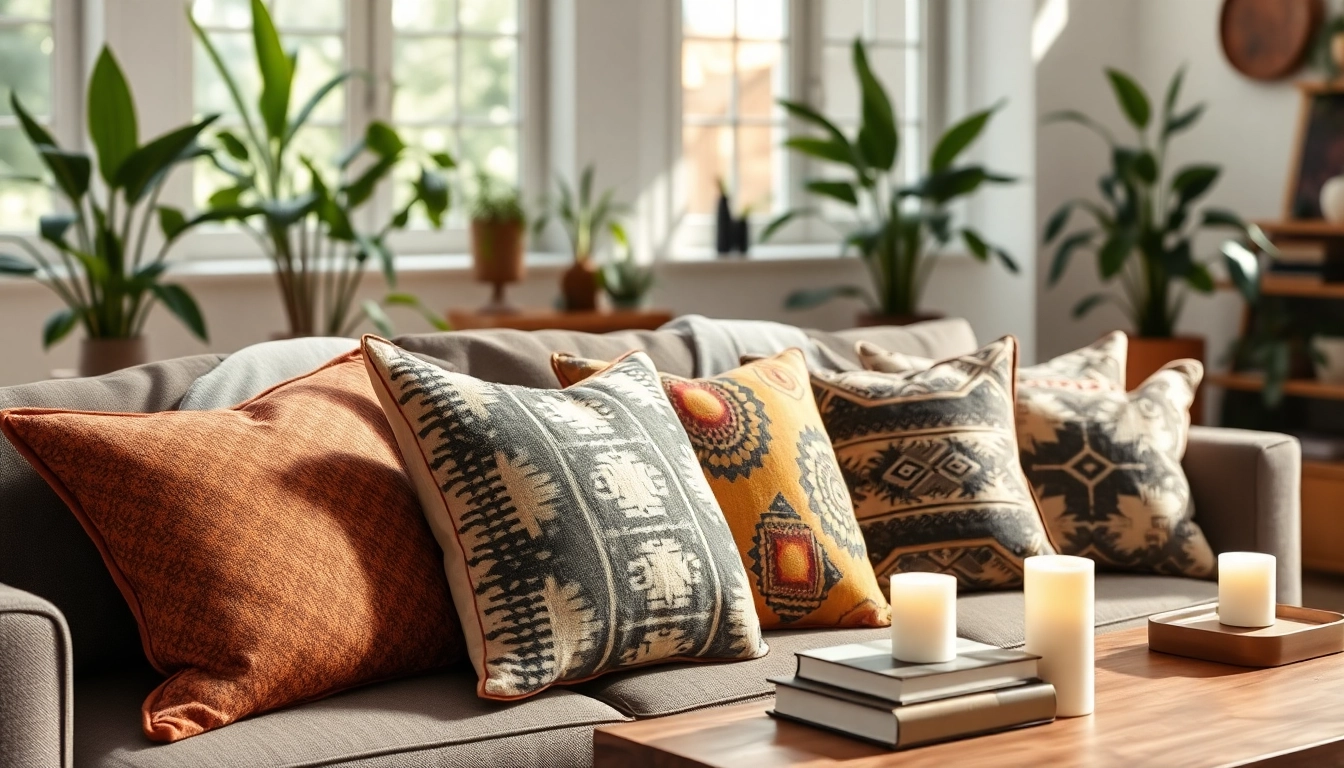Understanding Mudcloth: The Craft and Culture
What is Mudcloth? Origins and History
Mudcloth, also known as bogolan or bògòlanfini, is a handwoven cotton fabric that originates from Mali, West Africa. Traditionally crafted by the Bamana people, this fabric is dyed using fermented mud to produce intricate patterns with cultural significance. Each design tells a story, reflecting the life experiences, beliefs, and rituals of the artisans who create it. The use of natural dyes and the labor-intensive process of crafting mudcloth connect the fabric deeply to the earth, making it not just a textile, but a canvas of history and identity.
Significance in African Traditions
In many African cultures, mudcloth is more than just a material; it serves as a symbol of status, identity, and tradition. Women wear mudcloth garments during rites of passage, celebrations, and significant events, reinforcing the fabric’s ties to communal and familial bonds. The patterns found on mudcloth, such as stripes, geometric shapes, and symbols, often hold specific meanings, representing concepts like fertility, strength, and continuity. For many, mudcloth is a tool for storytelling, encapsulating generations of cultural narratives within its fibers.
Cultural Representations in Design
Modern design has embraced mudcloth as a staple, infusing spaces with a sense of authenticity and connection to African heritage. Designers incorporate mudcloth into various elements, from cushions to wall art, showing its versatility and aesthetic appeal. The rich, earthy tones and unique patterns add a layer of depth and warmth to contemporary decor, making it an attractive choice for those seeking to merge traditional craftsmanship with modern design sensibilities. The rise of global awareness around sustainability and ethical production has only heightened the appreciation for mudcloth, allowing it to find its place in homes worldwide.
Choosing the Right Mudcloth Cushions for Your Space
Factors to Consider: Size, Color, and Pattern
When selecting mudcloth cushions, a few critical factors can significantly impact your choice. Understanding the dimensions of your space is essential. Ensure the cushions are proportionate to furniture and room size. A larger sofa may benefit from oversized cushions, while smaller chairs might look best with standard-sized ones.
Color and pattern are equally important. Mudcloth comes in an array of colors—ranging from deep browns and blacks to vibrant reds and yellows. Choose hues that complement your existing color palette. It’s also important to consider the patterns; some designs are bold and tribal, whereas others are understated and minimalist. Consider the ambiance you wish to create; bold patterns can offer a lively spirit, whereas subtle designs can provide a calming effect.
Mixing and Matching Styles for Aesthetic Appeal
Mixing and matching mudcloth cushions with other textiles can create an exciting visual narrative in your space. For a bohemian look, combine mudcloth with other patterned fabrics such as ikat or kilim. Alternatively, for a modern aesthetic, pair mudcloth with solid colors or minimalist designs for a balanced approach. Accentuate your arrangement with cushions of varying sizes to add depth and interest. This style mix not only personalizes your decor but also highlights the unique features of each textile.
Best Places to Use Mudcloth Cushions
While mudcloth cushions can enhance virtually any room, certain areas allow them to shine particularly brightly. Living rooms and dens are ideal locations, where cushions can be arranged on sofas or chairs. They can be included in a playful throw pillow arrangement on a bed or a floor seating area to contribute to a warm, welcoming atmosphere. Additionally, mudcloth cushions can serve as focal points on a patio space, blending outdoor aesthetics with cultural richness. Their durability makes them suitable for both indoor and protected outdoor settings, ensuring versatility in decor options.
Care and Maintenance of Mudcloth Cushions
Washing and Cleaning Tips
To maintain the beauty and longevity of mudcloth cushions, proper care is essential. Handwash your cushions using cold water and mild soap, avoiding harsh chemicals that can damage the fabric. To clean stains, act promptly by dabbing the area gently with a damp cloth. It’s recommended to line dry your cushions instead of using a dryer, as excessive heat can alter the cloth’s texture and color vibrancy.
Storing Mudcloth Cushions
If you need to store your mudcloth cushions, ensure they are clean and dry first. Store them in a cool, dry environment, ideally within breathable fabric storage bags to prevent dust accumulation. Avoid plastic containers that can trap moisture and lead to mold growth. When taking them out of storage, give them time to air out and return to their natural shape before using them again.
Extending the Life of Your Cushions
To extend the life of your mudcloth cushions, rotate their use regularly to prevent uneven wear. Protect them from direct sunlight, as prolonged exposure can fade colors and weaken fibers. Spot clean as needed and avoid using them in high-humidity areas where moisture can compromise their integrity. By following these care tips, you can ensure that your mudcloth cushions remain vibrant and beautiful for years to come.
The Impact of Mudcloth in Modern Decor Trends
Bohemian vs. Modern Decor: Finding Balance
Today’s interior design landscape often sees a delightful blend of bohemian and modern aesthetics, where mudcloth plays a significant role in this convergence. The earthy tones and cultural roots of mudcloth align well with bohemian design elements that emphasize individuality and eclectic styles. In contrast, its clean lines and natural patterns can seamlessly integrate into modern spaces, characterized by minimalism and functionality.
Finding balance between these styles involves careful consideration of furniture shapes, color palettes, and supplementary decorations. For instance, pairing a mudcloth cushion set against a sleek, modern couch can create an inviting space that feels grounded yet stylish. The beauty of using mudcloth lies in its ability to enhance the narrative of any decor style.
Influence of Sustainable Fashion and Decor
As the conversation around sustainability in fashion and home decor intensifies, mudcloth stands out as a timeless and ethical choice. The fabric is created using traditional techniques that support local artisans and promote fair trade, making it a conscious purchase for environmentally and socially aware consumers. The re-emergence of sustainable design practices emphasizes the importance of choosing materials that are not only aesthetically pleasing but also kind to the planet.
People are drawn to items that tell a story and support cultural heritage. Mudcloth checks these boxes, fostering a deeper connection between the consumer and the product. This trend encourages a more intentional approach to decorating, favoring unique, handcrafted items over mass-produced alternatives.
Connecting Past and Present Through Design
Utilizing mudcloth in contemporary decor allows for a unique blend of history and modernity. It celebrates traditional craftsmanship while adapting to the tastes and needs of today’s homes. This connection is vital not just for aesthetic purposes but to appreciate the artisans’ efforts and the cultural narratives behind each piece.
By strategically incorporating mudcloth into your living spaces, you create an environment that not only showcases style but also pays homage to the cultural significance and stories woven within the fabric. These pieces become conversation starters, inviting guests to explore the richness of African heritage and its relevance in the modern world.
Where to Buy Quality Mudcloth Cushions
Top Online Retailers and Local Artisans
When searching for authentic mudcloth cushions, consider utilizing online retailers that specialize in African decor. Websites like https://labboho.com/collections/mudclothcushions offer a curated selection of cushions that emphasize quality and craftsmanship. Additionally, exploring local artisan markets can yield unique finds that support local economies and traditions. Always prioritize purchasing from reputable sources to ensure authenticity and fair practices.
What to Look for in Authentic Mudcloth
To identify genuine mudcloth, look for characteristics indicative of traditional craftsmanship. Authentic mudcloth is usually handwoven with irregularities that signify its handmade nature. The patterns should be dyed using natural materials, resulting in variations that add charm and uniqueness to each piece. Avoid overly perfect designs; the beauty of mudcloth lies in its imperfections, which tell a story of artisan labor and cultural heritage.
Supporting Ethical Craftsmanship and Fair Trade
Purchasing mudcloth cushions provides an opportunity to support ethical craftsmanship and fair trade practices. Many artisans rely on the revenue from their handcrafted goods to sustain their families and communities. By choosing to buy authentic, handcrafted mudcloth, you’re not only beautifying your space but also playing a role in preserving cultural traditions and promoting economic empowerment. Always verify that your purchase is sourced ethically and acknowledges the artisans’ rights and contributions.



